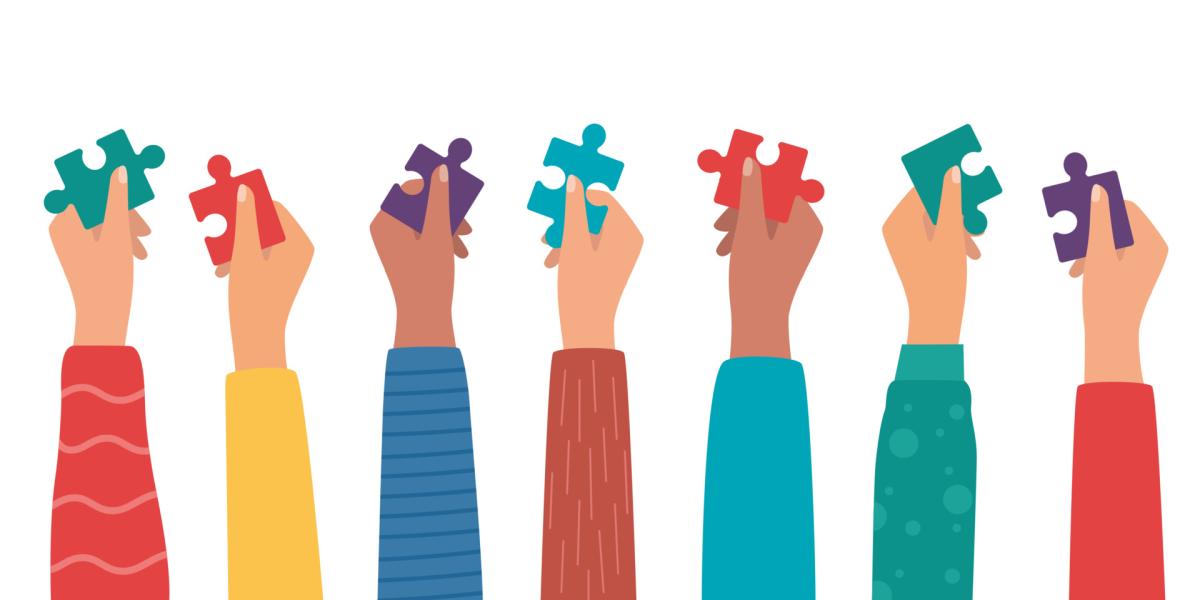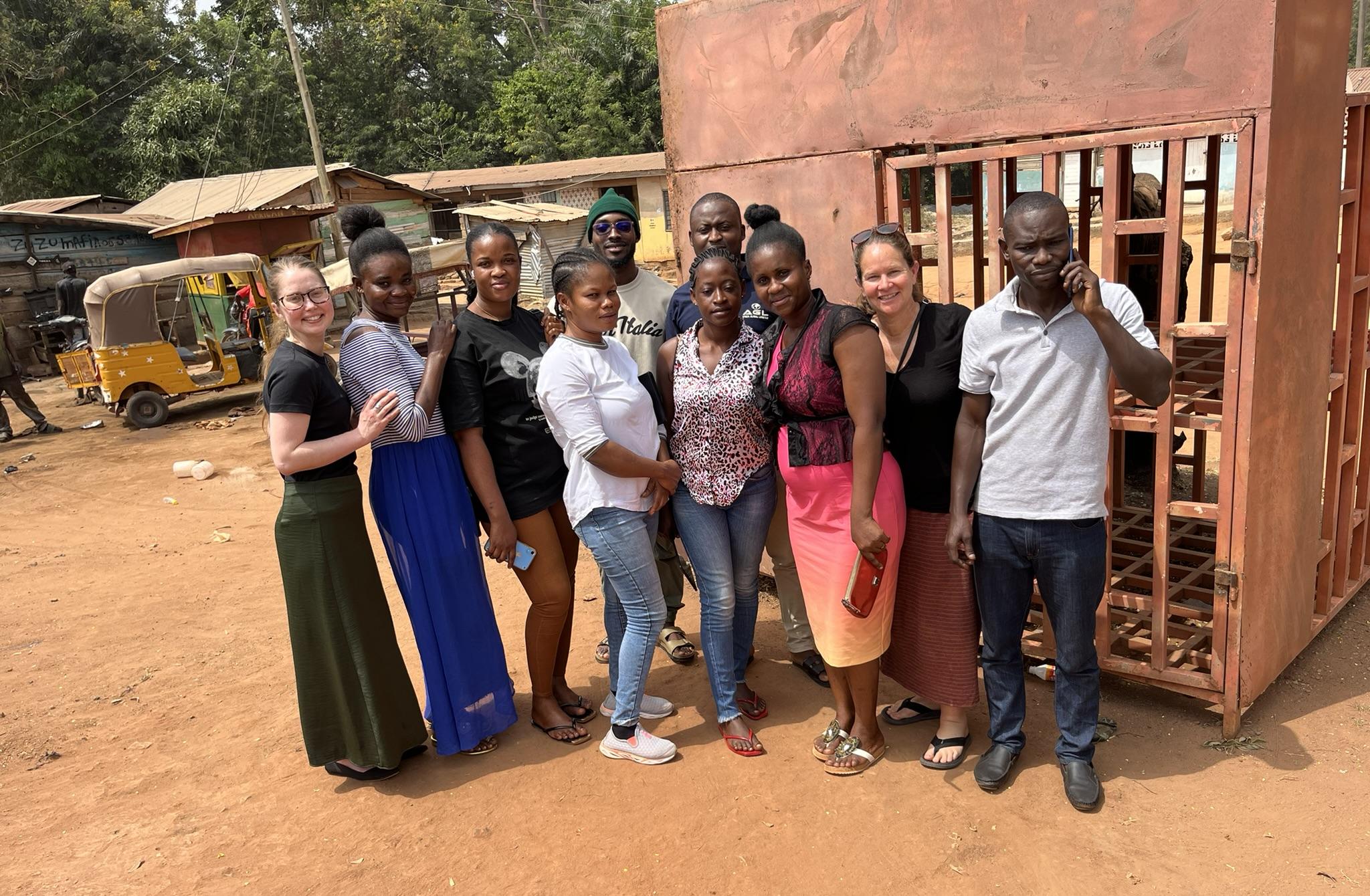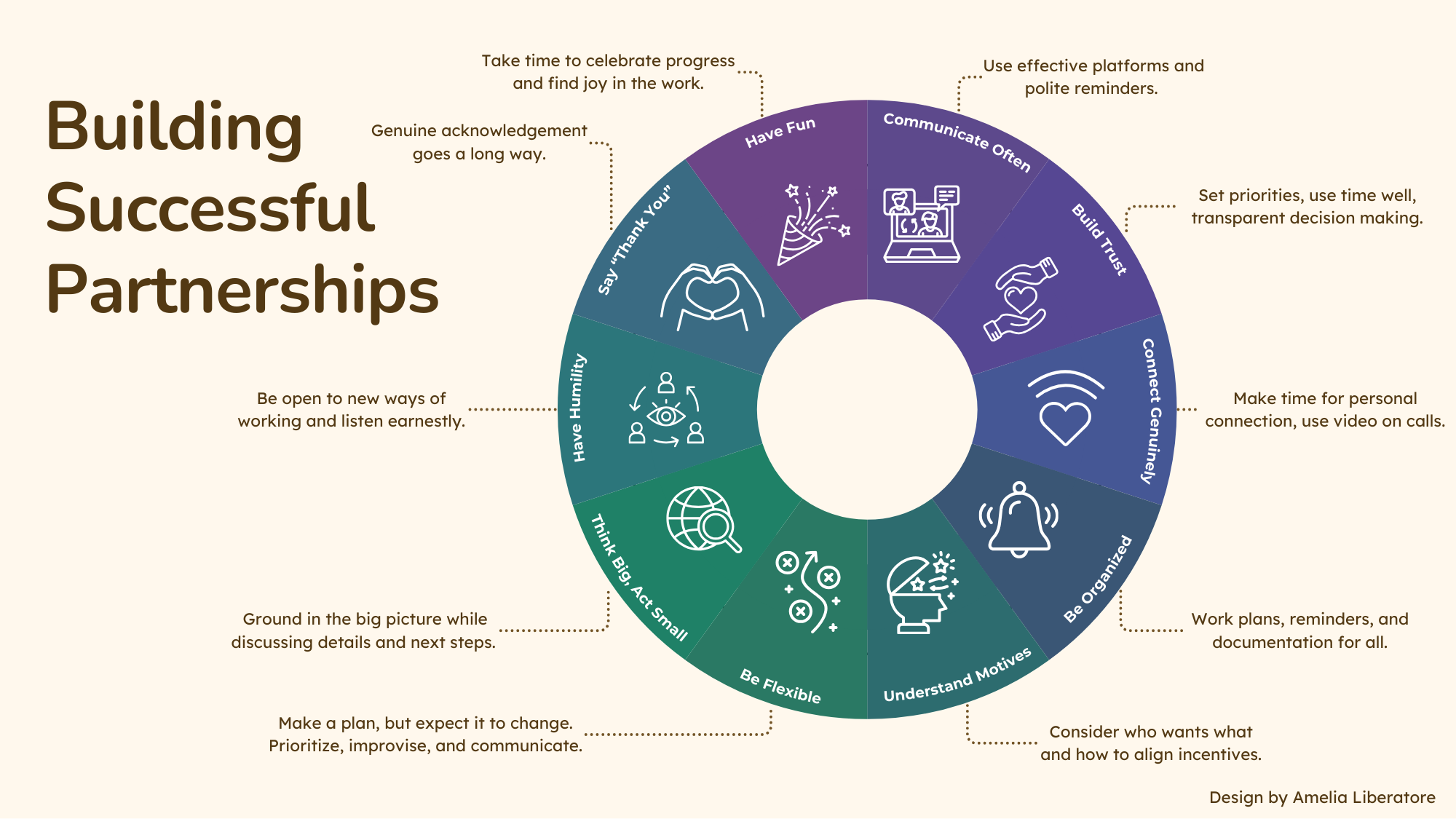
Interdisciplinary research has become essential for tackling complex environmental questions. These projects typically involve numerous collaborators, implementation partners, and funding partners, sometimes spanning multiple institutions. Successfully fostering these collaborations requires building strong relationships and maintaining effective communication among all partners to ensure smooth project execution and achieve successful outcomes.
As a project manager at emLab, one of the most rewarding aspects of my job is building and maintaining this diverse set of relationships. To be effective, I need to consider the unique combination of project dimensions and other influencing factors that shape the planned collaboration. Larger and more complex teams face a greater number of potential challenges, especially in team formation, leadership, management, and functioning. Evidence shows that poorly managed collaboration can negatively impact the quality of the science produced, while well-managed teams have the potential to accelerate scientific progress.
Over the past five years, I have supported nearly a dozen projects ranging in scope and addressing different environmental and societal challenges. Each project has diverse partners, team composition, and timeline. For the last four years I have managed the Combatting Household Air Pollution (CHAP) project, a collaboration between emLab and Columbia University’s Mailman School of Public Health, as well as our implementing partner Kintampo Health Research Center; our industry partners MFN Research, Rancard, and Zeepay; and Ghanaian government ministries. Together, we are working on transitioning people in Ghana from using charcoal to cleaner cooking fuel alternatives (Liquified Petroleum Gas), which will dramatically and measurably improve public health and contribute to women’s empowerment, economic development, and better environmental quality. With multiple institutions across various industries, this project underscores the importance of effective partnership collaboration. Based on this experience and many others, I’ve developed ten tips for researchers, project managers, and partners to help people work together and get things done.
Ten tips for effective partnership collaboration
Communicate often
Figure out effective methods of communication (e.g. Slack, email, WhatsApp) and meet people where they are at. Every project might have multiple communication channels, yet it’s the role of the project manager to learn how best to get information flowing through a project. That may mean learning a new communication tool or transitioning between multiple channels. Never underestimate the power of a phone call. These days this is not often a go-to method of communication, but phone calls are great for moving things forward with a personal touch, which can go a long way in building a relationship. I also never shy away from a polite reminder. People are busy and, as long as the reminder is polite, I have found most people appreciate them.
Build trust
Communication is a cornerstone of this trust building process. Keeping everyone informed of decisions and how and why those decisions were made will help everyone feel included in the process and build a rapport for honest engagement. Respect people’s time. Often our interactions with partners are during meetings. It’s essential to plan your meetings, which often starts with the question, is this a meeting or can this be an email or a slack thread? If a meeting is warranted (i.e. there needs to be a lot of discussion or brainstorming and decision making), then take the time to craft an agenda and send the agenda prior to the meeting so everyone knows what to expect and how to prepare. Before the meeting, know your priorities as the facilitator. Be flexible with the agenda, crafting the conversation around the key priorities you identified. End the meeting on time and send meeting recaps.
Build personal connections
At the end of the day, we are all people and we all have jobs to do and lives outside of work. I try to keep this in mind when running meetings and leave a little time for personal engagement. On virtual meetings, the awkward waiting-for-people-to-join time is perfect for questions about the weather or pets or children. If meeting virtually, I always use my webcam unless this is not an option for internet connectivity reasons. If cameras can’t be used I always welcome each person and try for a little light chit chat to add some dimension to people. Of course meeting in person is always preferred and can jump start the relationship building process tenfold.

EXAMPLE
Working on the CHAP project in Ghana, our US-based teams accomplish a lot of work in Slack. When we first started partnering with our implementation and technical partners, I set up a slack to continue the collaboration. It was quickly apparent that this tool was not widely used. Instead, WhatsApp proved the best tool for communication and collaboration amongst the various partners on the project. Phone calls have also proven to be needed and effective, with spotty internet, an eight hour time difference, and all partners having busy schedules, zoom meetings are not always feasible.
Have humility
Project managers generally love to learn and they are adept at working in multiple different ways. As part of the relationship building process, it’s key to be open to learning new ways of working. Your way is not always the best way. It’s important to understand how your partners work and then align the working styles to best reach the goal. This may mean learning and respecting a partner’s protocols or hierarchy. It’s also important to ask good questions and leave time to listen to the answers. A good project manager or facilitator will often ask for clarity and dig deeper in conversations to ensure everyone is on the same page.
Understand incentives
Before starting any project I like to look at the partners and think about what's in this for them. This is particularly important when working in cross-sectoral partnerships. Understanding what each partner wants to get out of the project and then focusing on where those priorities align without disregarding where they might differ will help keep everyone focused on the end goal. This can uncover co-benefits you may have previously missed and it helps you frame your communications with partners.
Be flexible
Come with a plan, expect it to change. As discussed above, having a plan and being organized about that plan is essential. It’s also essential to be adaptable and change the plan when needed. Most projects, and relationships, are journeys with a lot of twists and turns. The ability to prioritize, improvise, and communicate those changes will help you build lasting partnerships and ensure project success.

EXAMPLE
Working on the cell-based seafood project, our funding partner advocated for using 'kill signals'—the practice of quickly abandoning ideas that seem unworkable. While this approach is popular in the 'fail fast' culture of tech startups, it is completely at odds with rigorous scientific research. This required a cultural shift for the project and the researchers. Ultimately, this change helped us efficiently address the funder's questions and meet their expectations.
Be organized
Keeping yourself and your team organized is essential for project management but also for relationship management. People appreciate organized people. Taking the time to develop and share work plans, set and send reminders, and develop management plans for data and documents not only keeps everyone on track, it builds trust in you and your organization’s abilities to complete projects efficiently and effectively. Taking the time to put organizational practices in place also helps the future you looking for documentation or decisions from earlier in the project.
Think big, act small
For projects and in managing partner relationships it’s important to continually ground things in the big picture while discussing specifics and next steps. By reminding partners of the bigger picture when asking for materials or assigning tasks, it helps everyone, including yourself, prioritize the work effectively and at times can regenerate a sense of purpose or excitement about the work.
Say thank you!
Acknowledge people’s time, effort, and outputs. ‘Thank’ and ‘you’: two little words that have an enormous impact on people’s motivation to work and to interact with you. This can be a well placed ‘thank you’ in larger group settings recognizing someone’s work, or a simple ‘thank you for your time today’ at the end of a conversation. As long as it’s genuine, people will appreciate it.
Have fun
Laughter goes a long way. Keeping things light-hearted comes more naturally to some than others. If this is not your strong suit, I don’t recommend forcing it, but linking back to the ‘have humility’ tip, work doesn’t have to be all work all the time. Engaging on a personal level - to the extent people are comfortable - can go a long way in building lasting partner relationships. As a project manager, I have also learned that sometimes my job is just to cheer on the team and the process. When project scopes start to creep and you get into the groan zone of project development, it’s nice to take a step back, inject some positive reinforcement into the situation, and just cheer on the process.

To learn more about how to effectively manage projects, build meaningful partnerships, and more, reach out to Heather at hjlahr@ucsb.edu.



